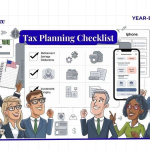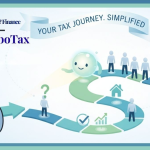15 Tax Optimization Strategies Used by the Wealthy: An In-Depth Look
Are you curious about how the affluent in India manage to minimise their tax burdens? In this insightful article, we delve into 15 legal strategies that wealthy individuals use to avoid paying excessive taxes. From shrewd ventures to utilizing charge motivating forces, we break down each strategy in an easy-to-understand way that can enable you to make educated budgetary decisions.
Tax Optimization and Tax Planning: 7 Essential Smart Strategies For Maximize Your Wealth
Assess optimization remains a foundation technique for wealth conservation and development in the complex world of the back. Whereas it’s basic to approach these strategies cautiously and determinedly within bona fide boundaries, understanding these strategies can contribute to basic encounters in high-level budgetary organizations. This article investigates 15 fundamental evaluation optimization procedures commonly utilized by the well-off.
1. Reinvest Profits and Tax Optimization

The brilliant run of the show in commerce development and assessment optimization is that the reinvested benefit is not saddled. This technique permits well-off commerce proprietors to develop their companies and net worth while minimizing assessable income.
Example: If a company makes $5 million in profit and reinvests all of it into new equipment, expansion, or R&D before the end of the fiscal year, that $5 million becomes a business expense and is not paying taxes as profit.
Benefits of Tax Optimization
- Quickened commerce growth
- Expanded company valuation
- Conceded individuals pay tax
2. Business Ownership and Deductions
Wealthy individuals often structure their lives around business ownership, allowing them to deduct a wide range of expenses that might otherwise be considered personal.
Deductible costs frequently include:
- Innovation and equipment (computers, phones, software)
- Travel costs (flights, lodgings, car rentals)
- Domestic office and utilities
- Wellbeing protection premiums
- Trade suppers and excitement (with a few limitations)
Example: A commerce proprietor might deduct the toll of an unused car if it’s used primarily for trade purposes or a portion of their domestic costs if they maintain a domestic office.
3. Strategic Relocation And Tax Optimization

Some high-net-worth people move to tax-friendly jurisdictions to minimize their tax burden.
Popular tax-friendly areas include:
- Dubai and other UAE emirates (no individual pays tax)
- Monaco (no individual wage tax)
- Cayman Islands (no individual pays tax)
- Singapore (regional assessment framework, tax rates on foreign-sourced income)
Considerations: While the surveyed venture stores can be critical, this strategy frequently incorporates high living costs and potential lifestyle changes. Considering components like the quality of life, healthcare, and political stability is fundamental to surveying benefits.
4. All-inclusive Corporate Structures
Huge organizations regularly utilize complex, around-the-world structures to optimize their global charge position.
Common procedures include:
- Setting up fortifications in low-tax jurisdictions
- Utilizing exchange surveying to move benefits to lower-tax areas
- Building up mental property holding companies in tax-friendly regions
Example: A tech company might set up an Irish subsidiary to hold its intellectual property. At that point, the US parent company pays authorizing expenses to the Irish company, moving benefits to a lower-tax jurisdiction.
5. Charitable Donations
Donations to enrolled charities are tax-deductible, giving a double advantage of kindness and charge reduction.
Advanced procedures include:
- Building up private foundations
- Donor-advised funds
- Giving acknowledged resources to maintain a strategic distance from capital picks up tax
Example: An affluent person gives $1 million worth of stock that they obtained for $200,000 to their private establishment. They may be able to deduct the total $1 million from their charges, whereas maintaining a strategic distance from capital increases the assessment of the $800,000 appreciation.
6. Equity-Based Emolument

Many officials and high-level workers pick value remuneration in step with high salaries.
Types of equity compensation:
- Stock options
- Confined stock units (RSUs)
- Execution shares
Benefits:
- Conceded tax assessment (regularly until the value is sold)
- Potential for lower capital pick-up charge rates
- Arrangement with the company performance
Example: An official gets stock choices as part of their recompense bundle. They don’t pay charges when getting the choices; when worked out, they may qualify for long-term capital pick rates if held for over a year.
7. Craftsmanship Ventures And Taxs Optimization
The craftsmanship advertisement offers special assessment focal points that sharp speculators can leverage.
Tax Optimization Procedures in Craftsmanship Investing:
- Acquiring craftsmanship as a commerce expense
- Giving acknowledged craftsmanship for assessing deductions
- Utilizing craftsmanship to concede capital gains through like-kind trades (even though this methodology has been restricted in later years)
Example: A financial specialist buys a $1 million painting through their commerce. Three years later, it’s valued at $6 million. By giving it to a historical centre, they could claim a $6 million assessment deduction.
8. Multiple Nationalities and Residency Planning
Some ultra-high-net-worth people deliberately oversee their residency status and citizenship to optimize their worldwide tax position.
Strategies include:
- Getting numerous passports
- Cautious following of days went through in each jurisdiction
- Organizing worldwide wage sources advantageously
Thought: This approach requires picky record-keeping and compliance with different charge regimes.
9. Key Gifting And Tax Optimization
Annual gifting stipends and lifetime forbiddances can exchange basic riches tax-free over time.
In the US:
- Yearly favoring overview avoiding: $18,000 per beneficiary (as of 2024)
- Whole Life favoring charge specific case: $13.61 million (as of 2024)
Example: An affluent couple with four children and eight grandchildren might bless $30,000 to each relative every year ($15,000 from each life partner), exchanging $360,000 per year tax-free.
10. Cryptocurrency and Protection Coins

While standard cryptocurrencies are becoming more controlled, a few well-off people utilize privacy-focused cryptocurrencies to maintain their financial privacy.
Potential benefits:
- Upgraded money-related privacy
- Potential for charge deferral or optimization in a few jurisdictions
- Expansion of wealth
Caution: Cryptocurrency controls are advancing quickly, and compliance necessities change significantly between wards.
11. Asset-Based Borrowing
Also Read: DISCOVER HIDDEN WEALTH: HOW TO BUY EVERY CHEAP TAX LIEN AND PROFIT BIG!
In advertising assets and enacting assessable events, the princely frequently borrow against their assets.
How it works:
- Utilize stocks, honest-to-goodness inheritances, or other imperative assets as collateral
- Get a low-interest loan
- Utilize the progress proceeds for living costs or investments
Benefits of Tax Optimization
- Maintain a strategic distance from capital picks up tax
- Keep up the proprietorship and potential appreciation of assets
- Conceivably deductible interest expenses
An official with $10 million in company stock might borrow $1 million against this recently to advertise it, kicking up an imperative isolated from prompt capital picks-up
evaluation.
12. Key Bankruptcy
In a few cases, well-off people may utilize insolvency laws to ensure individual resources while composing off commercial debts.
Critical Viewpoints of tax Optimization
- Separate individual and trade assets
- Understand exceptions in liquidation law
- Carefully time the liquidation filing
Caution: This procedure is complex, possibly hazardous, and ought to, as it was, be considered with master lawful advice.
13. Elective Property Classifications
Classifying extravagant resources like yachts as moment homes can sometimes give charge points of interest ordinarily saved for private property owners.
Potential Benefits of Tax Optimization
- Mortgage intrigued deductions
- Property assessment deductions
- Potential rental salary strategies
Requirements: To qualify, the vessel must generally have essential living comforts (resting quarters, cooking facilities, bathroom).
14. Believe Structures And Tax Optimization
Trusts can effectively oversee domain charges and exchange controlled riches to future generations.
Common sorts of trusts:
- Unavoidable Life Assurances Trusts (ILITs)
- Grantor Held Annuity Trusts (GRATs)
- Charitable Extra-Parcel Trusts (CRTs)
Benefits:
- Bequest charge diminishes or eliminated
- Resource protection
- Controlled the spread of wealth to heirs
Example: A well-off individual places $5 million in a GRAT. If the resources appreciate past the IRS-assumed rate of return, the overabundance development passes to beneficiaries tax-free.
15. Depreciation Strategies
Businesses can utilize the devaluation of resources to counterbalance salary, possibly lessening accessible benefits over time.
Key depreciation methods:
- Straight-line depreciation
- Accelerated deterioration (e.g., MACRS)
- Bonus depreciation
Example: A genuine domain speculator buys a $1 million rental property. Utilizing far-fetched isolation and reward deterioration, they might be able to deduct a few hundred thousand dollars in the first year, essentially decreasing their assessable income.
Tax Optimization in Activity: A Theoretical Case Study
Meet Sarah Chen, an influential tech business visionary in her mid-40s. Recently, she sold her program company for $50 million and is presently looking to optimize her charge circumstances. Here’s how Sarah might apply a few of the charge optimization methodologies we’ve discussed:
1. Reinvesting Benefits and Trade Ownership
Instead of stashing the whole $50 million from her company’s deal, Sarah chooses to promptly reinvest $30 million into an unused wander. This reinvestment decreases her assessable salary from the deal to $20 million.
Sarah structures her unused wander as an LLC, permitting her to:
- Deduct commerce costs such as a domestic office, unused computer hardware, and business-related travel
- Write off wellbeing protection premiums
- Claim devaluation on trade assets
2. Equity-Based Compensation
Equity Base Investment – Index Funds: Should You Buy Now, in an Overvalued Market in India?
In her modern company, Sarah selects a humble compensation of $200,000 per year, with the more significant part of her compensation coming in the form of stock options. This procedure permits her to:
- Defer charges on the bulk of her compensation
- Potentially advantage from lower long-term capital pick-up rates when she inevitably offers the shares
3. Key Gifting
Sarah is married with two children. She and her companion choose to take advantage of the yearly blessing assessment avoidance by gifting:
- $30,000 to each child ($15,000 from each parent)
- For Parents $30,000 to each
- $30,000 to each of their siblings
This permits them to exchange $240,000 per year tax-free to their family members, diminishing their assessable bequest over time.
Know more Gifting Strategy: Tax on Gold A Glittering Truth: Ultimate Guide to Gold Ownership
4. Charitable Gifts And Tax Optimization
Sarah built a donor-advised fund (DAF) with $5 million of appreciated stock from her unique company deal. This technique permits her to:
- Claim a $5 million charitable contribution in the current assessment year
- Avoid capital pick-up charges on the acknowledged stock
- Advise on how the reserves are dispersed to charities over time
5. Craftsmanship Investment
Sarah buys a $1 million form for her company’s central station. The design is evaluated at $3 million three a long time afterwards. She gives it to a neighbourhood gallery, permitting her to:
- Claim a $3 million charitable deduction
- Avoid capital picks up assess on the $2 million appreciation
6. Asset-Based Borrowing
Instead of offering more stock to support her way of life, Sarah takes out a $2 million loan against her stock property. This permits her to:
- Access cash without activating an accessible event
- Maintain possession of her increasing in-value assets
- Potentially deduct the intrigued as a venture expense
7. Believe Structures
Sarah set up a Grantor Held Annuity Believe (GRAT) with $10 million of stock from her modern company. The GRAT is organized to:
- Pay Sarah an annuity for 10 years
- Pass any appreciation over the IRS-assumed rate of return to her children tax-free
8. Real Estate Investment and Depreciation
Sarah contributes $5 million to a commercial genuine bequest property. Utilizing taken a toll isolation and reward deterioration, she’s able to:
- Deduct $1.5 million in devaluation at the beginning of the year
- Offset other salary and diminish her generally charged liability
The Result of Tax Optimization
By actualizing these techniques, Sarah has:
- Reduced her quick assessable wage from the company sale
- Set up structures for continuous tax-efficient wealth amassing and transfer
- Made critical charitable commitments while moreover decreasing her assessment burden
- Invested in increasing value resources (craftsmanship, genuine domain) with assessed advantages
- Got cash for living costs without enacting assessable events
It’s basic to note that this level of appraisal optimization requires cautious planning, advanced organization, and the assistance of skilled monetary and true blue specialists. Furthermore, all strategies must comply with current appraisal laws and controls, which can change over time.
This diagram shows how well people can combine unmistakable procedures to diminish their by and huge tax burden while satisfying other budgetary and charitable objectives. In any case, it also underscores the complexity of high-level assessment optimization and the assets required to execute these procedures effectively.
Conclusion of Tax Optimization
While these strategies highlight the complexities of examination optimization for the well-off, it’s essential to note that assessment laws are subject to alteration and move by domain. Ceaselessly direct with qualified examination professionals, a few times recently implementing any examination strategy.
The future may bring fundamental changes to how charges are coordinated and paid. Rising innovations like blockchain may possibly offer more transparency and control over how to assess cash is designated, potentially leading to a more productive and evenhanded system.
As we move forward, the balance between reasonable tax assessment and financial motivating forces will continue to be essential in forming monetary arrangements worldwide. The continuous discussion of wealth disparity and charges of decency may lead to changes that may change some of these procedures in the coming years.
It is important for people at all wealth levels to remain educated about charge laws and to lock in dependable financial arrangements. While numerous of these procedures are fundamentally available to the exceptionally well-off, understanding them can give profitable insights into the broader economic framework and inform discussions around financial planning and wealth distribution.
Thank you for reading this post, don't forget to subscribe!






